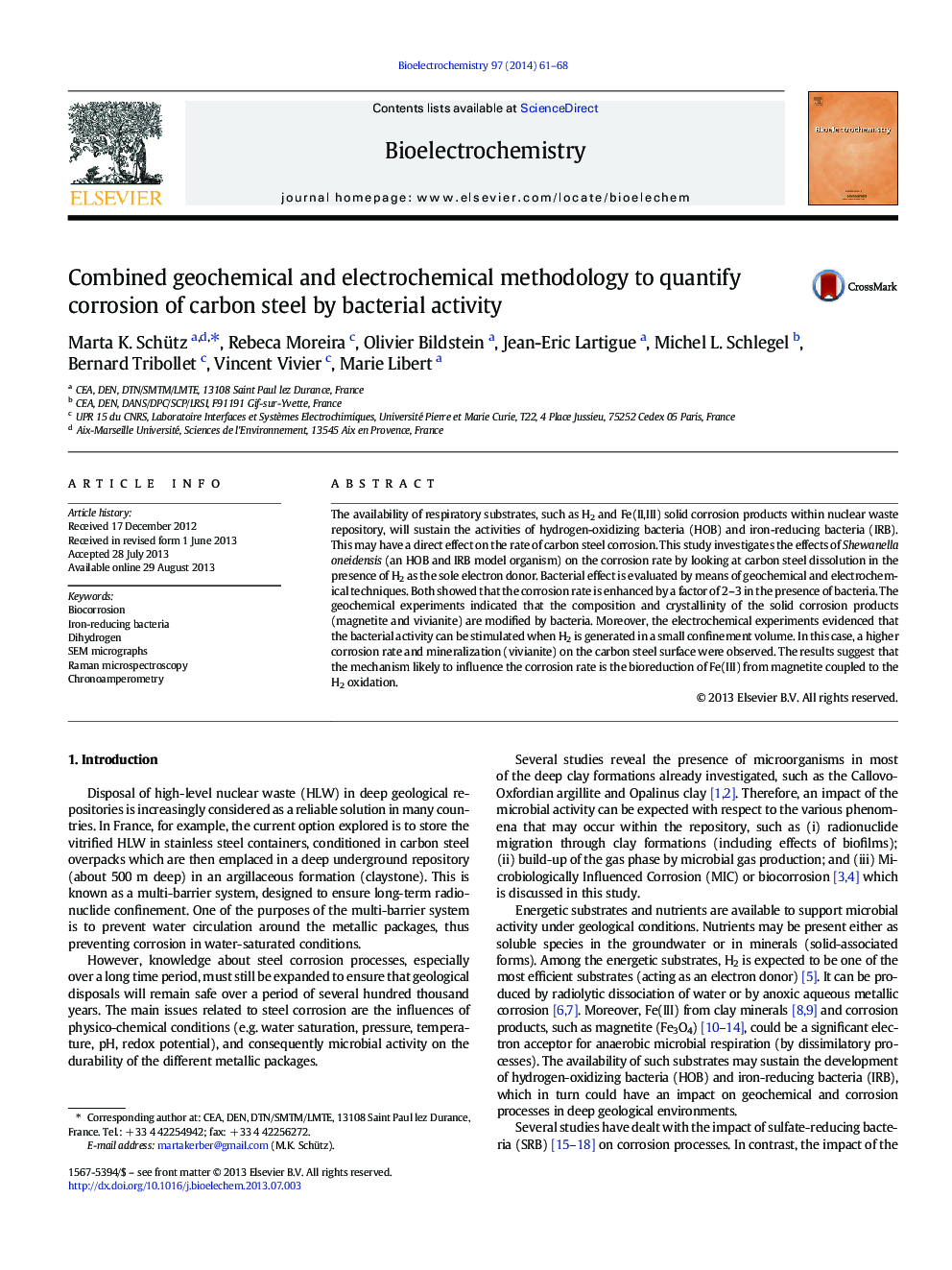| Article ID | Journal | Published Year | Pages | File Type |
|---|---|---|---|---|
| 1267992 | Bioelectrochemistry | 2014 | 8 Pages |
•Geochemical and electrochemical techniques show an increase on corrosion by bacteria.•Short-term corrosion rate is higher than the long-term one.•Bacterial activity may be stimulated in a situation of H2 confinement.•The composition and crystallinity of corrosion products are modified by bacteria.•Bioreduction of Fe(III) coupled to H2 oxidation can influence the corrosion rate.
The availability of respiratory substrates, such as H2 and Fe(II,III) solid corrosion products within nuclear waste repository, will sustain the activities of hydrogen-oxidizing bacteria (HOB) and iron-reducing bacteria (IRB). This may have a direct effect on the rate of carbon steel corrosion. This study investigates the effects of Shewanella oneidensis (an HOB and IRB model organism) on the corrosion rate by looking at carbon steel dissolution in the presence of H2 as the sole electron donor. Bacterial effect is evaluated by means of geochemical and electrochemical techniques. Both showed that the corrosion rate is enhanced by a factor of 2–3 in the presence of bacteria. The geochemical experiments indicated that the composition and crystallinity of the solid corrosion products (magnetite and vivianite) are modified by bacteria. Moreover, the electrochemical experiments evidenced that the bacterial activity can be stimulated when H2 is generated in a small confinement volume. In this case, a higher corrosion rate and mineralization (vivianite) on the carbon steel surface were observed. The results suggest that the mechanism likely to influence the corrosion rate is the bioreduction of Fe(III) from magnetite coupled to the H2 oxidation.
